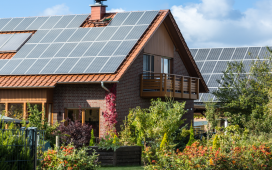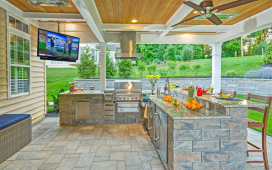Cabinet manufacturing is an integral part of the furniture industry, and with the growing emphasis on sustainability and eco-friendliness, more companies are adopting environmentally friendly materials and practices in their manufacturing processes. Eco-friendly cabinet manufacturing involves using materials that are sourced sustainably, reducing waste, and minimizing the environmental impact of production.
Benefits of Using Eco-Friendly Materials
There are several benefits to using eco-friendly materials in cabinet manufacturing:
- Reduction of environmental impact: Eco-friendly materials are typically sourced from sustainable sources, such as responsibly managed forests or recycled materials, which helps reduce deforestation and minimizes carbon footprint.
- Healthier indoor air quality: Many conventional cabinet materials contain volatile organic compounds (VOCs) that can off-gas harmful chemicals into the air. Eco-friendly materials are often low or VOC-free, promoting healthier indoor air quality.
- Durability and longevity: Eco-friendly materials are often of high quality and durability, ensuring that cabinets last longer and reduce the need for frequent replacements, thus reducing waste.
Practices for Sustainable Cabinet Manufacturing
In addition to using eco-friendly materials, sustainable cabinet manufacturing also involves adopting environmentally conscious practices:
- Efficient use of resources: Minimizing waste by optimizing material usage and recycling or repurposing leftover materials.
- Energy-efficient production: Using energy-efficient machinery and technologies to reduce energy consumption during manufacturing processes.
- Water conservation: Implementing water-saving techniques in production processes and recycling water where possible.
- Reducing carbon emissions: Implementing transportation strategies to reduce the carbon footprint of delivering materials and products.
Examples of Eco-Friendly Materials in Cabinet Manufacturing
There are several eco-friendly materials that can be used in cabinet manufacturing:
- Bamboo: Bamboo is a fast-growing and renewable resource that is often used as an alternative to hardwood in cabinet manufacturing.
- Recycled wood: Using reclaimed or recycled wood from old furniture or buildings reduces the demand for new timber and contributes to waste reduction.
- Low-VOC finishes: Opting for low or zero VOC finishes and adhesives helps reduce indoor air pollution and create a healthier living environment.
By incorporating eco-friendly materials and practices into cabinet manufacturing, companies can reduce their environmental impact, promote sustainability, and provide consumers with more environmentally conscious choices when selecting cabinets for their homes.














